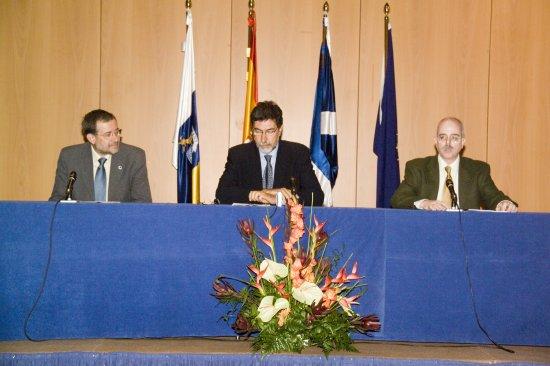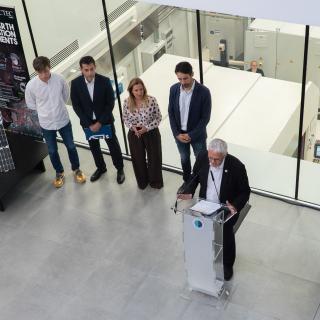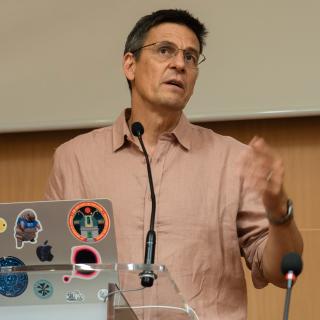The Tenerife Local Government’s (Cabildo) Councillor for Culture, Miguel Delgado, together with the Subdirector of the Instituto de Astrofísica de Canarias (IAC), Carlos Martínez Roger, and the IAC’s joint Head of Postgraduate Studies and Director of the Department of Astrophysics of the University of La Laguna, Jordi Cepa, this morning formally opened the eighteenth Canary Islands Winter School of Astrophysics, which will be celebrated until 1 December at the Congress Centre of Puerto de la Cruz (Tenerife).
Miguel Delgado welcomed this latest in the series of Winter Schools, organized by the IAC ‘with the aim,’ he said, ‘of sharing and discovering with the participants the new techniques and advances that are daily being brought forth in the field of astrophysics.’ The Councillor also hoped that the next two weeks in Tenerife, as on previous occasions, would mark ‘an important date in the calendar.’ and he ended by thanking the participants for their contribution to science.
‘One of the most successful aspects of these Winter Schools so far,’noted Carlos Martínez Roger, has been the opportunity they provide to students to share close contacts, both formal and informal, with the lecturers,’ a relationship, he added, ‘that in the past had produced the seeds of many lasting collaborations and that would no doubt do so on this occasion.’
Jordi Cepa, one of the organizers of this Winter School, underlined, ‘because of the IAC Winter Schools, more than 1000 researchers world wide had now been trained in the most competitive and novel areas of astrophysics.’
On the subject of the School, Cepa explained that the study of emission lines ‘is fundamental for analysing star formation and the chemical composition of objects in the Universe.’ He added that the OSIRIS instrument, which will shortly commence operation on the GTC (Gran Telescopio CANARIAS), ‘is optimized for the study of emission lines.’
Forty-eight doctoral students and recent PhDs from nineteen different countries whose studies relate in some way to the theme of this year’s School will be participating. The classes will be complemented with visits to the IAC’s headquarters in La Laguna (Tenerife) on 23 November, the Observatorio del Teide in Izaña (Tenerife) on 21 November and the Observatorio del Roque de los Muchachos in Garafía (La Palma) on 29 November.
LECTURERs AND COURSES:
- Grazyna Stasinska, Observatory of Paris-Meudon, France
What Can Emission Lines Tell Us?
- Mauro Giavalisco,Space Telescope Science Institute, USA
Emission Line Surveys
- Stephen Eikenberry, University of Florida, USA
Galactic Objects
- Bradley Peterson, State University of Ohio, USA
AGN/QSOs
- Daniel Schaerer, University of Geneva, Switzerland
Primeval Galaxies
- Piero Madau, UCO/Lick Observatory, USA
Star Formation
- Francesca Matteucci, Astronomical Observatory of Trieste, Italy
Chemical Evolution
Practicals:
- Sergio Pascual, Complutense University of Madrid, Spain
- Héctor Castañeda, IAC, Spain
- Ana Pérez, IAC, Spain
- Bernabé Cedrés, IAC, Spain
- Ángel Bongiovanni, IAC, Spain
School Organizers:
- Jordi Cepa
- Emilio Alfaro
- Ignacio González Serrano
- Jesús Gallego
- Miguel Sánchez Portal
- Francisco Sánchez



